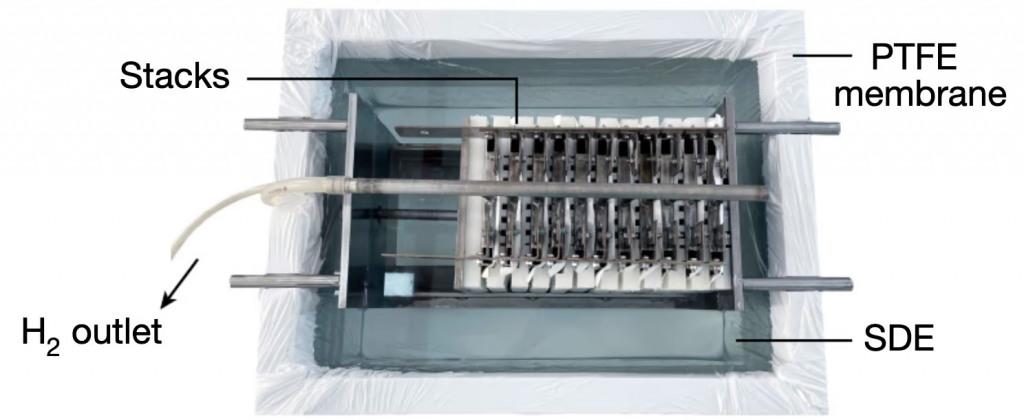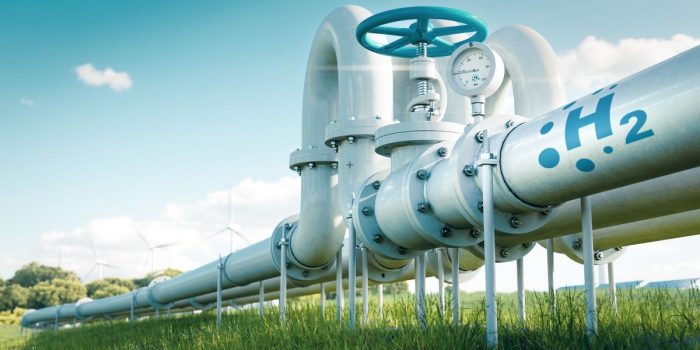Chinese researchers have come up with a seawater electrolyzer that works as efficiently as a commercial freshwater electrolyzer for months without corroding itself to death. These machines could harvest lithium, too.
In a study published in Nature last month, the Nanjing team demonstrated a direct seawater electrolysis machine that ran for more than 3,200 hours (133 days) without failing. They say it’s efficient, scalable, and operates much like a freshwater splitter “without a notable increase in operation cost.”

The output is pure water evaporating at a fast pace out of the seawater without any extra energy input, then crossing the PTFE membrane and getting absorbed into the electrolyte as a liquid.
The team tested an 11-cell electrolyzer box in seawater from Shenzhen Bay. It generated some 386 liters of hydrogen gas per hour throughout the 133-day test. Assuming a car drives about 100 km (62 miles) on 1 kg of hydrogen, this 11-cell device created enough hydrogen per hour to drive a car about 3.2 km (2 miles).
The electrolyzer consumed about 5 kWh for each normal cubic meter (Nm3) of hydrogen produced. The seawater electrolyzer operates at about 71% efficiency.

The device can also be developed into a lithium-collecting machine.
The Nanjing team carried out testing to see how their evaporation process affected the concentration of lithium in the seawater. They found a massive 42-fold increase after a couple of hundred hours, and they were able to precipitate out some lithium carbonate crystals. This indicates that with more development, these machines might be able to generate revenue both from hydrogen and battery metals.
The research is published in the journal Nature.


